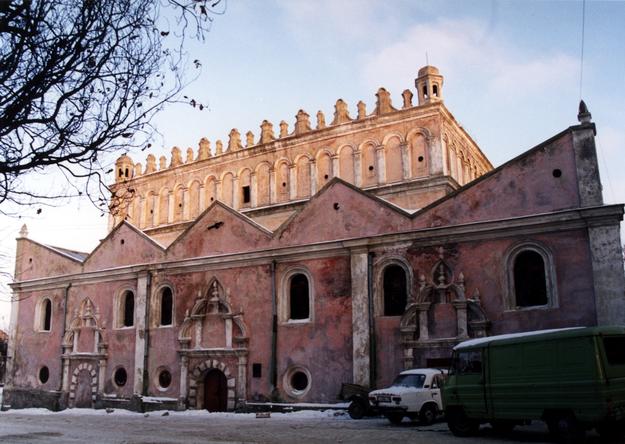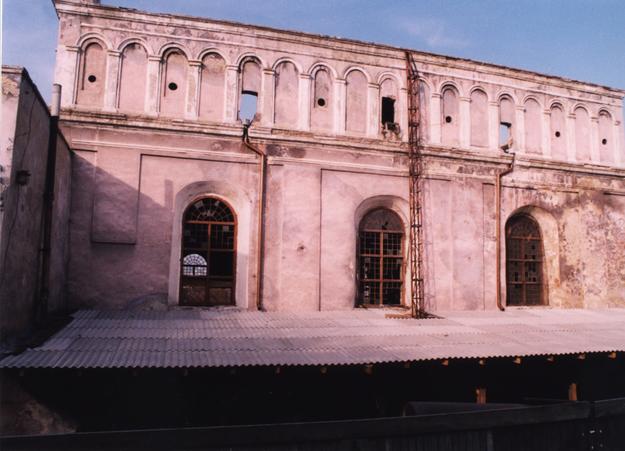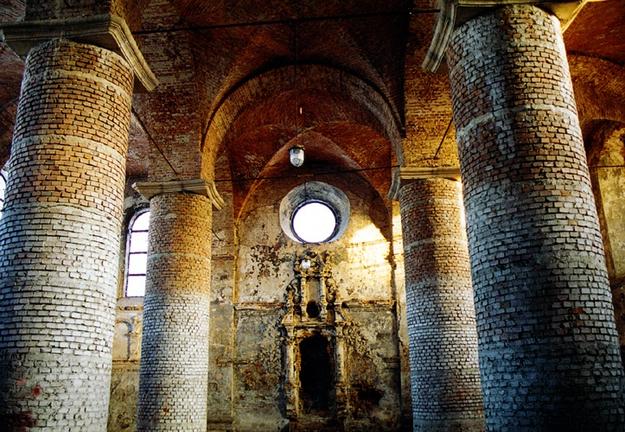Zhovkva Synagogue
Zhovkva Synagogue was built in the 1690s for a rapidly growing Jewish community. During the eighteenth century, it became an important center of Jewish study and worship. An outstanding example of a fortress synagogue with a late-Renaissance appearance and baroque additions, Zhovkva was designed to protect Jews from invasions. To this day, a passageway to the roof and underground shelters exist. During World War II, Nazis detonated explosives in the synagogue; while most of the interior and roof was destroyed, the outer walls and much of the baroque ornamental details survived. Most of Zhovkva’s Jewish population was killed during the war; consequently, religious functions were discontinued in the temple. Poor materials were used in the 1955–1956 partial rebuilding and the 1992 façade repair campaigns. As a result, the building gradually deteriorated, with additional problems stemming from the restored areas. For years, the building was used as a storehouse, which contributed to its rapid deterioration. Water ingress and accumulation had compromised the structural integrity of the building.
2000 World Monuments Watch
Zhovkva Synagogue was included in the 2000 World Monuments Watch. In 2001, WMF’s Jewish Heritage Program supported archaeological exploration and the development of a restoration plan for the synagogue. Over the next four years, a new copper roof replaced reconstructions over the main hall. Accumulated debris around the surviving walls was removed, improving drainage and reducing moisture in the structure. Masonry was stabilized to avoid any further collapse of walls.
The town center, where the synagogue is located, was listed as a State Historical-Architectural Reserve in 1994. Inclusion in the World Monuments Watch and the subsequent conservation work assure that the synagogue and its history will be remembered as an important part of the community’s legacy.



